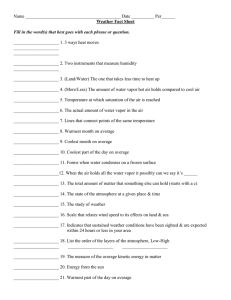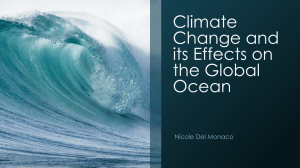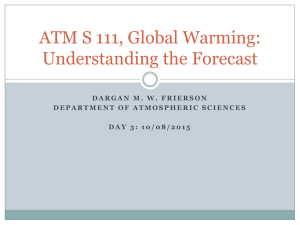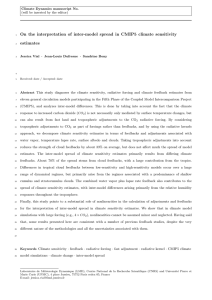SIO 217C: Climate Spring 2014 Climate Feedbacks Discussion Questions
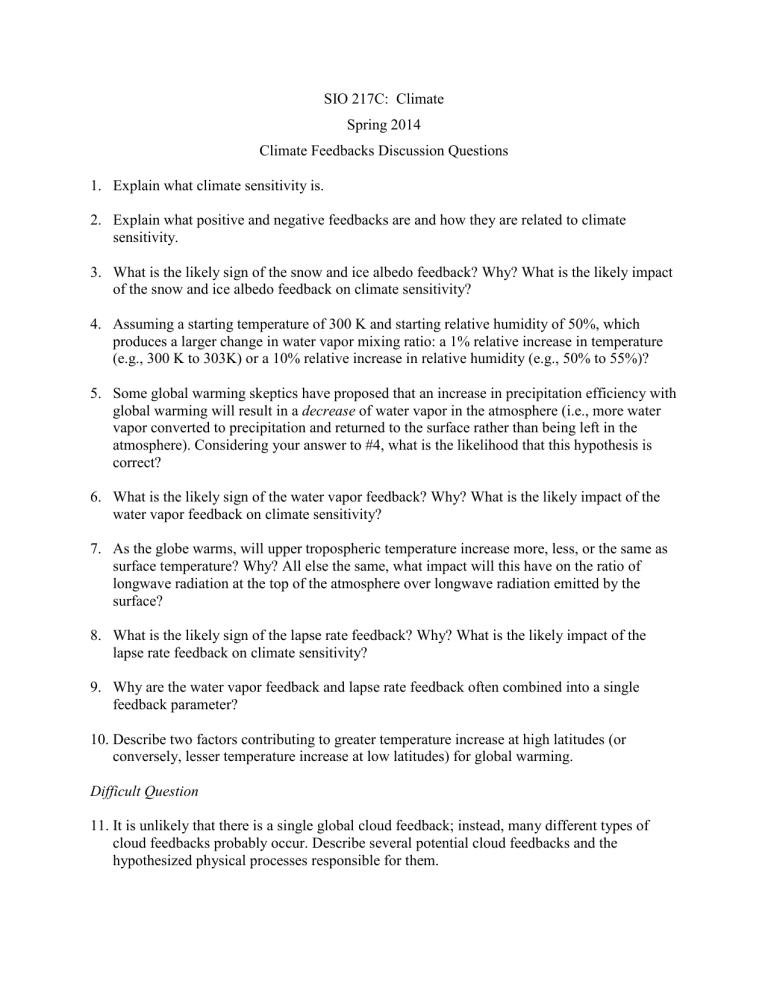
SIO 217C: Climate
Spring 2014
Climate Feedbacks Discussion Questions
1. Explain what climate sensitivity is.
2. Explain what positive and negative feedbacks are and how they are related to climate sensitivity.
3. What is the likely sign of the snow and ice albedo feedback? Why? What is the likely impact of the snow and ice albedo feedback on climate sensitivity?
4. Assuming a starting temperature of 300 K and starting relative humidity of 50%, which produces a larger change in water vapor mixing ratio: a 1% relative increase in temperature
(e.g., 300 K to 303K) or a 10% relative increase in relative humidity (e.g., 50% to 55%)?
5. Some global warming skeptics have proposed that an increase in precipitation efficiency with global warming will result in a decrease of water vapor in the atmosphere (i.e., more water vapor converted to precipitation and returned to the surface rather than being left in the atmosphere). Considering your answer to #4, what is the likelihood that this hypothesis is correct?
6. What is the likely sign of the water vapor feedback? Why? What is the likely impact of the water vapor feedback on climate sensitivity?
7. As the globe warms, will upper tropospheric temperature increase more, less, or the same as surface temperature? Why? All else the same, what impact will this have on the ratio of longwave radiation at the top of the atmosphere over longwave radiation emitted by the surface?
8. What is the likely sign of the lapse rate feedback? Why? What is the likely impact of the lapse rate feedback on climate sensitivity?
9. Why are the water vapor feedback and lapse rate feedback often combined into a single feedback parameter?
10. Describe two factors contributing to greater temperature increase at high latitudes (or conversely, lesser temperature increase at low latitudes) for global warming.
Difficult Question
11. It is unlikely that there is a single global cloud feedback; instead, many different types of cloud feedbacks probably occur. Describe several potential cloud feedbacks and the hypothesized physical processes responsible for them.


